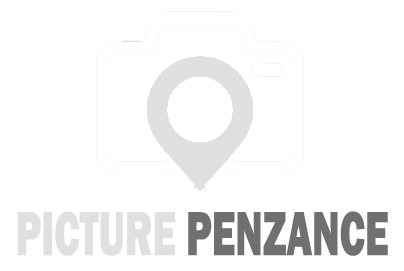Hi Steff,
Here a piece from a website I found regarding your question on portrait lenses:
Introduction
No one knows why, but everyone calls 105mm lenses "the perfect portrait lens." What's up with this?
Perspective and Proportion
Perspective depends only on your position. It has nothing to do with your lens.
Shorter or longer lenses don't change perspective, they just make framing tighter or looser. Different lenses require you to move closer or farther way to get the framing you want, but it's the change in position that alters perspective, not the lens. If you want a tight head shot, you have to do it from too close for comfort with a 50mm lens, making a 50mm lens a poor choice for head shots. When you're only a foot or two away, noses grow and ears disappear.
Fifteen Feet
Our brains recall people's facial features as they appear to be from about 15 feet (5 meters) away.
Ask a human visual system researcher for the details, but our eyes don't actually see anything by themselves. All our eyes do is send signals to our brains which are then interpreted in ways about which we're still learning. In the case of facial recognition, when our eyes see a familiar face, it triggers our brain to reconstruct an image of those features as they appear from about 15 feet. If we see someone from only inches away, we don't see them distorted as a camera would; our brain perceives and reconstructs their features in proportions similar to a distant view. Therefore we want to be at least about 15 feet away when photographing people in order to achieve realistic proportions. Here are the size of subjects that roughly fill the frame with different lenses from 15 feet away:
Subject covered comfortably at fifteen feet (5m).
DX and Canon 1.6x-------------------
FX (Full Frame) and 35mm Film
50mm 6' (2m)--------------------------------------9' (3m)
70mm 4.5' (1.3m)---------------------------------6.5' (2m)
85mm 3.5' (1m)-----------------------------------5' (1.5m)
105mm 2.8' (90cm)---------------------------------4' (1.3m)
135mm 2.2' (70cm)---------------------------------3' (1m)
200mm 1.5' (45cm)---------------------------------2' (70cm)
300mm 1' (30cm)-----------------------------------1.5' (50cm)
400mm 9" (20cm)-----------------------------------13" (35cm)
500mm 7" (18cm)-----------------------------------11'' (30cm)
So what's the optimum portrait lens?
It depends on how much of a person you're showing.
If you want the whole person standing, you can use a 50-70mm lens. If they sit down, a 70 105mm works great. If you want just head and shoulders, you'll want a 200mm to 300mm lens, at least, since you want to stay at least fifteen feet away. Ever see a pro model shoot in the field? The photographer is usually using a big fat telephoto on a monopod like a 300mm f/2.8 or 400mm f/2.8 for head shots.
So what's this about 105mm lenses?
It's just an old wives' tale from the 1950s.
As the 35mm format became popular in the 1960s, the most popular affordable lens from Nikon happened to be the 105mm lens, first as the f/4 for 1950s Nikon rangefinders, and then the 105mm f/2.5 for SLRs. Like most old wives' tales, people just put "105mm" and "portrait" together without asking why.
What's the optimum distance?
This is all art. Closer and farther away renders the facial features in different proportion.
Not everyone looks best at the same distance. As you get closer the nose gets bigger and the ears get smaller. Get further away, and the face flattens out. People working in studios often have space limitations. I usually try to get as far away a possible.
Background Rendition
Backgrounds are important in portraits.
You usually want them to go out of focus and disappear. Large apertures like f/2.8 and f/2 help. This is why photographers use things like 300mm f/2.8 lenses for head shots in the field. A weird characteristic of lenses called bokeh (Blurred Backgrounds) can make backgrounds have more detail or texture than you'd think, even if they are out of focus. A lens with bad bokeh can have distracting backgrounds even if they are completely out of focus!
The Best Lenses Today
For field use, I love the Nikon 135mm f/2 DC. DC stands for Defocus Control, which means Bokeh Optimization. The 135mm DC is one of Nikon's sharpest lenses. The DC feature allows you to tailor the bokeh for a perfect background that simply disappears into smooth washes of color. Nikon also makes a slightly smaller and less expensive 105mm f/2 DC. The 105mm f/1.8 AIS and 105mm f/2.5 are nice, but went obsolete back in the early 1990s when they were replaced for portraiture by the DC lenses. Since few people outside of Japan understand what the DC lenses do, I don't know that any other than the most savvy pros know about them. Less informed people misunderstand them to be soft focus lenses, which they most assuredly are not.
These shorter lenses were never perfect for head shots.
For head shots, a longer lens like a 300mm or 400mm is best. If I'm in a studio with a controlled background, I use my 80-400mm VR since I can use one lens for all views. If I'm in the field, I'd consider lugging a huge f/2.8 tele. On a more practical budget, the 300mm f/4 lenses do almost as good a job of losing the backgrounds as the f/2.8s, and cost a tiny fraction of the f/2.8 lenses. For people with rational budgets, don't worry. Use whatever you have and have fun, like the 18-55mm lens that came with your camera - just zoom to 55mm. The 70-300mm zooms also work fine.
Extract from:
KenRockwell.com
